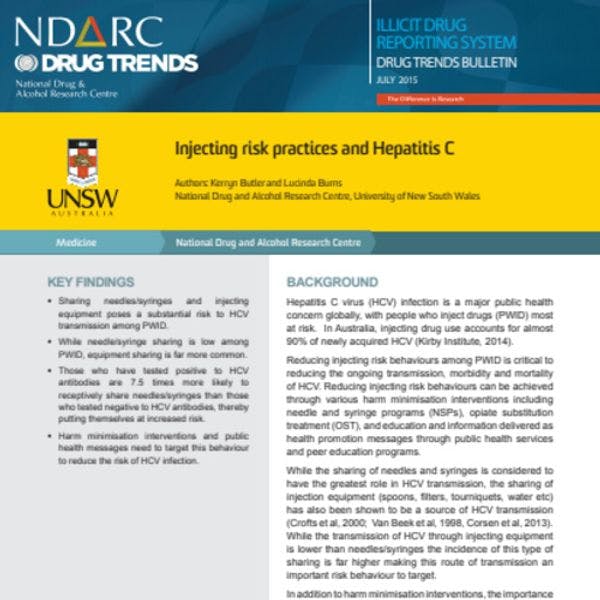Injecting risk practices and Hepatitis C in Australia
The primary objectives of this NDRAC study were to determine the extent of injecting risk behaviours among a typical sample of PWID, and to compare the drug use and risk behaviours of PWID who reported anti-HCV positive and negative results.
Key findings
Sharing needles/syringes and injecting equipment poses a substantial risk to HCV transmission among PWID. While needle/syringe sharing is low among PWID, equipment sharing is far more common. Those who have tested positive to HCV antibodies are 7.5 times more likely to receptively share needles/syringes than those who tested negative to HCV antibodies, thereby putting themselves at increased risk. Harm minimisation interventions and public health messages need to target this behaviour to reduce the risk of HCV infection.
Conclusions
Harm reduction strategies and health promotion messages need to target these behaviour to educate and inform individuals of the additional risks related to sharing and equipment sharing poses.
Keep up-to-date with drug policy developments by subscribing to the IDPC Monthly Alert.
Downloads
Regions
Related Profiles
- National Drug and Alcohol Research Centre
